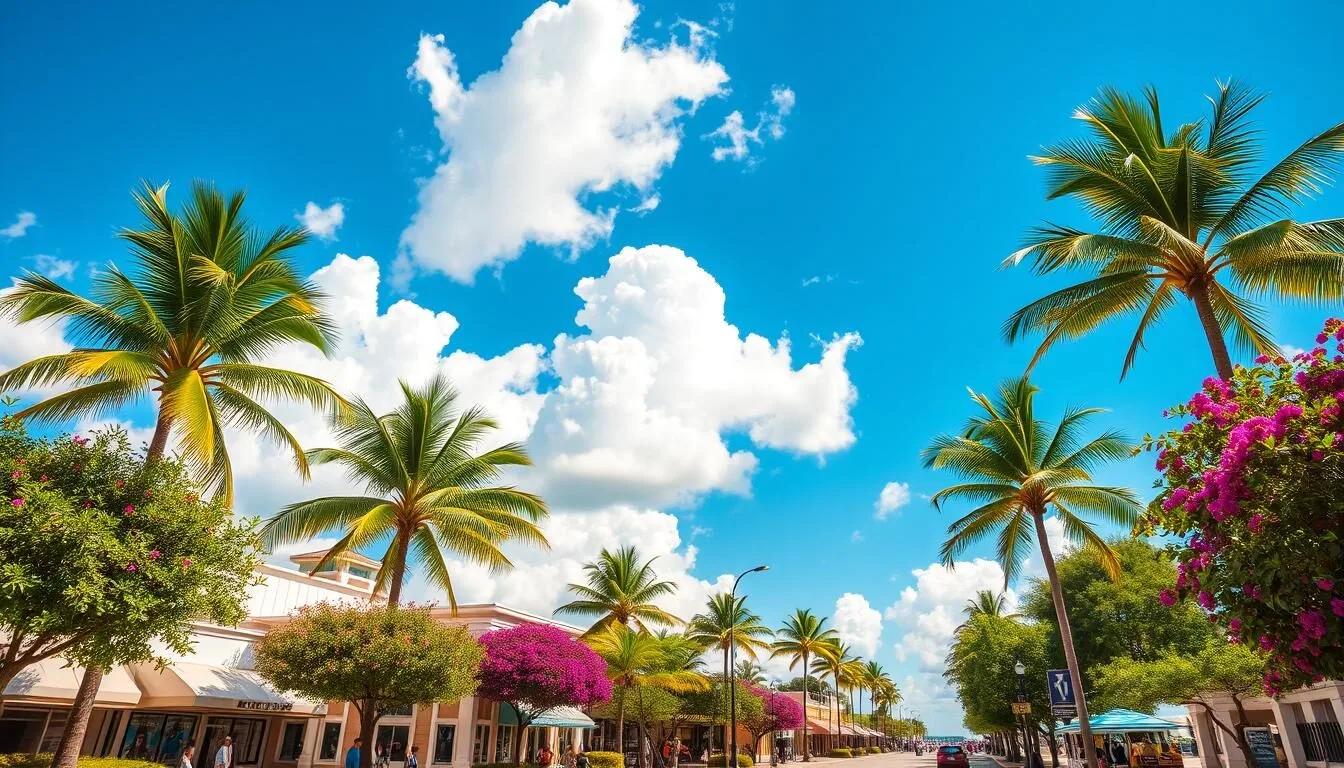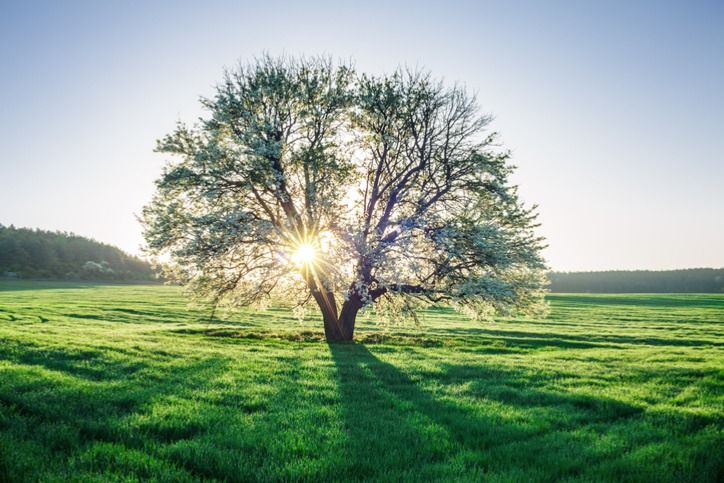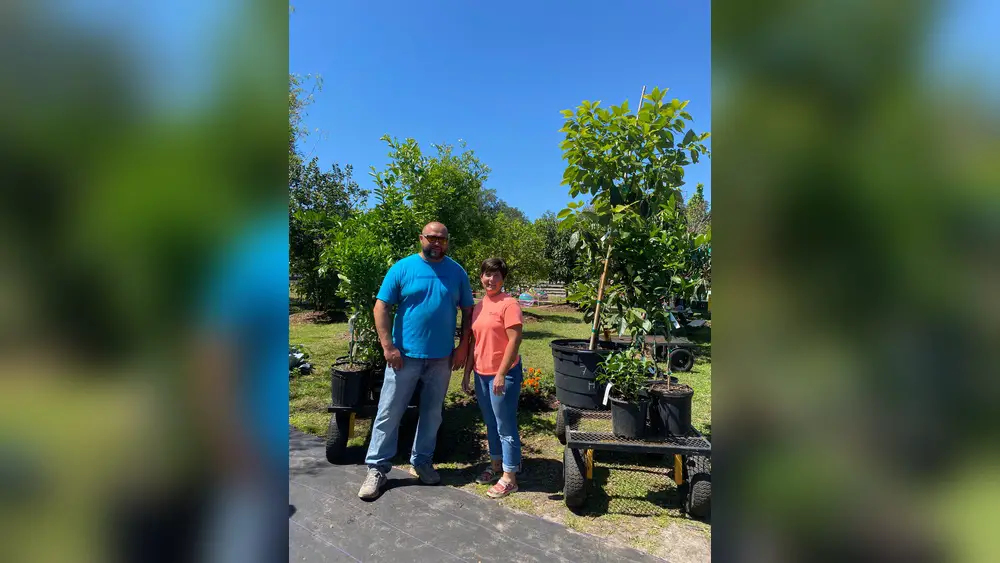If you’re thinking about planting a tree in Florida, timing is everything. Planting at the right time can make the difference between a tree that thrives and one that struggles to survive.
You want your tree to grow strong, provide shade, and add beauty to your landscape for years to come. But when is the best month to plant trees in Florida? Knowing the ideal planting window helps you avoid unnecessary stress on your tree and saves you time and money in the long run.
Keep reading to discover exactly when you should plant your trees in Florida to give them the best start possible.
Tree Planting Seasons
Florida’s climate allows for flexible tree planting times. Choosing the right season helps trees grow strong. Understanding seasonal benefits guides better planting decisions.
Different seasons offer unique advantages and challenges for tree care. Knowing these helps you plan the best time to plant. This section explains key seasons for planting trees in Florida.
Winter Planting Benefits
Winter is a calm season for tree roots to settle. Cooler temperatures reduce stress on new trees. Trees planted in winter use stored soil moisture well.
Water needs are lower in winter, helping young trees thrive. This season allows roots to grow before spring heat arrives. Winter planting often leads to stronger trees in summer.
Spring And Summer Considerations
Spring brings warmth and rain that encourage growth. Trees planted in spring can quickly establish leaves and roots. But spring heat can stress young trees without careful watering.
Summer is hotter and drier, increasing water needs. Planting in summer requires extra care and frequent watering. Avoid the hottest months to reduce risk of heat damage.
Year-round Planting Possibilities
Florida’s mild climate allows tree planting almost all year. Selecting the right tree species is key for success. Native and drought-tolerant trees adapt well to various seasons.
Regular watering and soil care help trees survive any season. Monitor weather forecasts to avoid planting during extreme heat or storms. Year-round planting offers flexibility for gardeners.
Regional Planting Differences
Florida’s climate varies from north to south, affecting the best time to plant trees. Regional planting differences help gardeners decide the ideal month to start. Each area has unique weather patterns and soil conditions. Understanding these can improve tree survival and growth.
Planting too early or too late can stress young trees. Choosing the right timing ensures they establish strong roots before hot or dry periods. Below is a breakdown of the best planting months by region in Florida.
North Florida Timing
North Florida has a cooler climate with more seasonal changes. The best time to plant trees here is from late October to early December. The soil is warm enough for roots to grow. Planting during this period helps trees avoid the summer heat stress. Trees get established before the coldest winter months.
Central Florida Timing
Central Florida offers a mild climate year-round. Plant trees from mid-November to January for best results. This timing takes advantage of cooler temperatures and some winter rains. Trees planted in these months develop roots well before spring heat. Avoid planting in summer to reduce water stress.
South Florida Timing
South Florida has a tropical climate with warm temperatures most of the year. Plant trees from December through February. The cooler, drier winter months reduce pest problems. Trees planted now grow stronger before the hot, rainy summer season. Early planting also avoids root rot from heavy summer rains.
Selecting Trees For Florida
Selecting the right trees for Florida requires understanding the local climate and soil. Florida’s warm temperatures and sandy soil influence which trees will thrive. Choosing trees suited to these conditions ensures healthy growth and longevity. Consider trees that handle heat, humidity, and occasional drought well. This approach helps you build a beautiful, sustainable landscape across the state.
Fast-growing Shade Trees
Florida homeowners often want shade quickly. Fast-growing trees provide relief from the hot sun in just a few years. Species like the southern live oak and bald cypress grow rapidly and create dense canopies. These trees offer cooling shade and add value to your property. Planting fast growers saves time and creates comfortable outdoor spaces sooner.
Drought-tolerant Varieties
Water can be scarce in parts of Florida during dry seasons. Drought-tolerant trees survive longer with less water. Examples include the Florida mahogany and the red cedar. These trees reduce water use and stay healthy in dry spells. Choosing drought-resistant species lowers maintenance and supports eco-friendly gardening.
Avoiding Oversized Trees
Some trees grow too large for small yards or close to buildings. Oversized trees risk damaging foundations and power lines. Species like the eucalyptus and the royal palm can become too tall and wide. Select trees with manageable sizes and root systems. This choice protects your home and keeps your landscape safe and tidy.

Credit: advancetreepros.com
Planting Techniques
Planting trees in Florida requires careful techniques for the best growth. Proper methods improve tree survival and health. This section covers essential steps to plant trees successfully in Florida’s climate.
Site Preparation
Choose a location with enough sunlight and space for the tree. Clear the area of grass, weeds, and debris. Loosen the soil to help roots grow easily. Test soil drainage to avoid waterlogged roots. Good site preparation sets the stage for strong trees.
Proper Planting Depth
Dig a hole twice as wide as the root ball but no deeper. Plant the tree so the top of its root ball is level with the ground. Avoid planting too deep or too shallow. Proper depth prevents root rot and supports healthy root spread.
Watering And Mulching Tips
Water the tree deeply after planting to settle the soil. Keep the soil moist but not soggy during the first year. Apply mulch around the base, about 2 to 3 inches thick. Mulch conserves moisture and controls weeds. Keep mulch away from the trunk to avoid decay.
Care After Planting
After planting trees in Florida, proper care is essential for strong growth. Trees face heat, dry spells, and pests. Good care helps them settle and thrive. Focus on watering, feeding, and protection from threats.
Irrigation Strategies
Water the tree deeply right after planting. Keep soil moist but not soggy. Use slow, deep watering to reach roots. Water more often in hot, dry weather. Mulch around the base to keep moisture in. Avoid watering leaves to reduce disease risk.
Fertilizing Schedules
Wait a few weeks before fertilizing new trees. Use a balanced fertilizer suitable for Florida soil. Apply fertilizer in early spring and late summer. Follow package instructions to avoid overfeeding. Healthy soil often needs less fertilizer. Compost can boost nutrients naturally.
Pest And Disease Management
Inspect trees regularly for pests like aphids and scale. Remove affected leaves or branches quickly. Use mild insecticidal soap if infestations grow. Watch for signs of fungal diseases, especially after rain. Keep area around tree clean to reduce pests. Choose disease-resistant tree species when possible.

Credit: travel.com
Common Mistakes To Avoid
Planting trees in Florida requires more than just choosing the right month. Avoiding common mistakes ensures healthy growth and long life for your trees. These errors often cause stress to trees and can lead to failure. Understanding what to avoid helps you plant trees successfully.
Planting Too Close To Structures
Many plant trees too near buildings or fences. Roots may damage foundations or pipes over time. Branches can scratch walls or block windows. Trees need enough space to grow freely. Plant them at least 10 feet away from any structure.
Ignoring Soil Conditions
Florida soils vary widely across the state. Some areas have sandy soils that drain quickly. Others have clay soils that hold water. Testing soil before planting is important. Adding compost or mulch can improve poor soil. Healthy soil supports strong root systems and tree health.
Overwatering And Underwatering
Watering mistakes harm trees too. Overwatering causes root rot and weak roots. Underwatering leads to drought stress and leaf drop. New trees need consistent moisture but not soggy soil. Water deeply once or twice a week depending on rainfall and soil type.

Credit: www.skyfrogtreeservice.com
Frequently Asked Questions
What Can I Plant In October In Florida?
Plant cool-season vegetables like kale, spinach, carrots, broccoli, peppers, and lettuce in Florida in October. Also, plant perennials such as salvia and lavender. North and Central Florida plant mainly in October-November; South Florida continues into January. Water consistently during the dry season for best growth.
When’s The Best Time To Plant A Tree In Florida?
The best time to plant a tree in Florida is during the winter months. This period offers cooler temperatures and less stress on new trees. However, many tree species can be planted year-round with proper care and watering. Choose trees suited to Florida’s climate for best growth.
What Is The Fastest Growing Tree In Florida?
The fastest growing tree in Florida is the Hybrid Poplar. It can grow up to 5 feet per year in warm climates.
Can You Plant Trees In Winter In South Florida?
Yes, you can plant trees in South Florida during winter. The mild climate supports healthy root growth and establishment. Choose appropriate species for best results.
Conclusion
Planting trees at the right time helps them grow strong and healthy. In Florida, the best months vary by region but mostly fall between October and January. Cooler weather and adequate rainfall support young trees well. Watering regularly during dry periods ensures good root development.
Choose native or well-adapted trees for better success. Start planting early to give trees a good start before the heat returns. Healthy trees add beauty and value to your landscape. Timing matters—plan your tree planting to enjoy lasting benefits.

